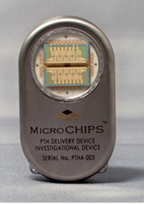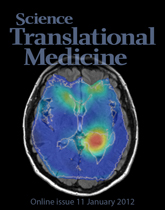Maha Hussain MB ChB is Professor of Medical Oncology at the University of Michigan. I was privileged to interview her about cabozantinib (XL184), a novel drug in development for multiple indications, including prostate cancer.
In this final post, Dr Hussain discusses the scientific rationale behind the mechanism of action for cabozantinib, a multi-kinase inhibitor of C-MET, VEGF and others. She also shares her thoughts on where the scientific data suggests it should have most impact on prostate cancer. I have emphasized in bold a few sections that stood out to me.
BSB: We saw that the VEGF inhibitor bevacizumab (Avastin) failed in prostate cancer, so what is the scientific rationale behind targeting c-MET & VEGF?
Dr Hussain: Let me just begin with a little background. The c-MET pathway and VEGF pathway from a generic perspective in cancer are specifically of interest. The trial [with cabozantinib] was originally designed, not that there was any specific preclinical data with the drug in prostate cancer, but rather because of the fact that the MET signalling pathway appears to be relevant in a variety of tumors where there is an overexpression. This potentially causes us, or at least the sponsor I should say, to believe this is worth targeting.
In retrospect, the sponsor targeted diseases where there seems to be overexpression of MET and that’s how it started. Now, there is data though in terms of overexpression, if you looked at tissues from primary versus lymph node versus metastatic disease there appears to be a stepwise increase in the rate of overexpression of MET in specifically prostate cancer.
In the short audio clip below Dr Hussain next discusses the key finding that if you block Androgen Receptor (AR) signaling, MET expression goes up. Click here if you can’t see the SoundCloud audio player.
Dr Hussain continues: What happened is serendipity occurred, and that is the drug appeared to be very active. In essence, we are now going back to the lab to try to figure out exactly why does it work? Is it just a bone only issue, and when I say bone I mean microenvironment issue, or is it actually more than that, is it a totality of both microenvironment and an anti-tumor effect?
What’s interesting is in the literature, there is data that would indicate that when you activate MET, one protects the cancer cells from potential damaging effects of DNA damaging agents. There is also some data, not in prostate cancer specifically, that MET actually mediates resistance to other growth factors like EGFR and Src and so on. When you try to inhibit them, MET actually appears to potentially mediate resistance to those inhibitors. There is also data that potentially MET pathway stimulates angiogenesis in the context of sunitinib resistant tumors.
Now in prostate cancer, what we we know is that VEGF is critical for the osteoblast, osteoclast action, and both MET and VEGF seem to crosstalk to regulate the interaction between the tumor cells, the bone cells, the endothelial cells and so on. There are several trials that have targeted the microenvironment.
You mentioned Avastin, but the reality of it is that sunitinib was a negative trial also, and the bone targeted drugs have been generally negative trials.
The question is, why does this thing work when everything else has failed? My guess is that it may very well may be that pure targeting of one pathway is not enough and that you need a multi-targeted approach.
The drug, while it is targeting VEGF and MET, it is not a pure target of VEGF and MET, it has multiple other effects, and truthfully no one can say the reason it is working in prostate cancer is because it is inhibiting MET. I honestly don’t think that we have demonstrated that.
We do have a clinical trial actually that has just started to specifically look at what happens in the tumors in the bone in patients who are going to be treated with this drug.
BSB: Did you see the recent paper in Cancer Discovery that talked about suppression of tumor invasion and metastasis by concurrent inhibition of C-MET and VEGF signaling in pancreatic neuroendocrine tumors?
[As an aside for those interested, Sally Church, PhD has an excellent post on Pharma Strategy Blog, “Combined VEGF and MET inhibition in some cancers may be better than either alone,” which discusses the Cancer Discovery paper by Sennino et al.)
Dr Hussain: In my [AACR] presentation, I do put the data from the pancreas neuroendocrine [research]. It is not from that paper, but I think it is data from previous papers that were published that looked at how the drug works. This was data that I was able to get through the sponsor from Drs Sennino and McDonald.
BSB: Would we we better off combining separate c-MET and VEGF inhibitors rather than have one drug like cabozantinib that has multiple targets?
Dr Hussain: I think you want to go with what works and thus far, this is the first drug that has again what we think is a MET and VEGF targeting based on the preclinical data, that seems to work. But I would also point that it is not a pure VEGF & MET it also has RET, KIT, FLT and AXL. My point here is, we assume that this is the reason.
But I would point out is, that I think the notion that you are going to declare victory on cancer by targeting one pathway in a disease that has multiple redundant pathways, in my view is a naive assumption. We have known for example, with even diseases that are chemosensitive that you couldn’t cure them with one drug and Testes cancer is a perfect example. Probably, the model of a curable cancer is Testes cancer. Because there is no other cancer, a solid tumor that you actually target, treat in metastatic disease and can cure at a high rate. There is just nothing else, with all these new discoveries with targeted drugs, none of them have thus far cured a metastatic patient. And I would stand corrected if I am not right.
BSB: So your suggestion is that we will need to combine these drugs?
Dr Hussain: Absolutely! The problem is if you are a scientist and you put in for a grant and you put in a drug that is quote unquote a “dirty drug” because it is has multi-targeting, that is not scientifically good enough. Yet from a clinical perspective, I think that what is clear is we are not curing people by having one target targeted. I would argue that all of the “progress” that has occurred if you look at the drugs, they are targeting pathways that are isolated pathways that are not necessarily highly prevalent in all diseases. In some diseases it is a small percentage of patients that have those pathways.
If you look at the outcomes, these are clearly not what I would call huge victory, because you are basically either causing a response or a short lived remission and not significantly impacting survival, as in curing cancer, prolonging life by years. So I go back to the model of Testes cancer, which is again one of the most curable cancers that we have in the metastatic disease setting. And even then, we do not cure it with one drug.
BSB: Can I take you back briefly to something you said earlier that caught my attention. You said earlier that expression of c-met was increased after attenuation of the androgen receptor signaling, so one strategy would be to inhibit activation of both the c-MET and AR signaling pathways.
Dr Hussain: Correct, correct.
BSB: I saw that there is a phase 1 trial just starting looking at abiraterone in combination with cabozantinib, so is the theory there that we could potentially delay time to castration resistance if we inhibit both AR signaling and the c-met/VEGF pathway?
Dr Hussain: Correct, but I would say that the place to start is not with abiraterone, but with primary hormonal treatment when the tumor is still sensitive to hormones.
BSB: So when we are doing androgen deprivation therapy?
Dr Hussain: Correct. I personally think that is where we need to start. And in fact because of that, in partnership with one of my colleagues here who is also my co-leader for the prostate cancer program at Michigan, we have some preclinical data that is in progress looking at hormone sensitive tumor model.
The question comes up where is the right time to put these drugs, and the truth of it is you brought up the issue of expense, and while I am not the person who says how much life is worth, clearly if it is my life or my family’s life or my patients life, it is worth a lot. But society has to decide how much money to spend on what and for what magnitude of benefit. That is something that I think we are all struggling with, as you point out, because healthcare dollars are going down and a lot of these drugs are very expensive. And when they work we talking about prolongation of life anywhere from 2 months to 5 months, and that’s average. The reality of what that means is that you are treating thousands of patients to get benefits in a smaller number of patients, and is this something sustainable and is this the way we should go?
I would argue that, life is very precious and very valuable, the more that we can do to impact it, the better we will be as doctors, patients and society. But that in order to get a bigger bang for the bucks, so to speak, for the drug itself is we need to begin to think about moving these drugs in settings whereby you have cancers that are not as resistant where the impact might be higher. Imagine then, we would then prolong life by maybe years, as opposed to months. I think that would be much more worth it.
Yes, it will be more costly to test these drugs earlier, and certainly there is the financial aspect of it for Pharma. They would want to go in a setting where they can get the results sooner rather than later, and not treat ten times more patients to find the results. I would say from the big picture perspective as a doctor, that’s not my focus, my focus is to move these drugs to settings where we can have more impact for more patients, and more meaningful impact on their outcomes.
BSB: In essence, you do think that is where cabozantinib could have most effect at that time?
Dr Hussain: Maybe. I think this is a question that should be asked. We have proposed to look at in the preclinical setting, to try to justify a clinical trial potentially. Recognizing that it is one of those things, clearly we are limited by access to drugs and $ to support these type of questions. And if it is not cabozantinib, it’s the next in line targeting that pathway. I do think someone needs to ask that question and we could envision trial designs that can give you short-term answers that will give you a sort of Go/No-Go type strategy. It is a complex process, obviously. I would say if the world was perfect, and if it was my money and my drug, I would go that way to see how it behaves.
BSB: Thank you!
This brings to an end the series of posts covering my interview with Dr Maha Hussain, a thought leader in prostate cancer clinical research. I would like to sincerely thank her for the time she took out of her busy schedule to talk to Biotech Strategy Blog.
To effectively treat prostate cancer will require drugs to be given in combination. A VEGF/MET inhibitor may have a role to play in the treatment of prostate cancer, but whether Exelixis have the appropriate clinical trial strategy in place with cabozantinib to achieve this, remains to be seen.
Other pathways that we didn’t have time to discuss may also need to be targeted e.g. Src and PI3-Kinase. It will be interesting to see what new data is presented at the annual meeting of the American Association for Cancer Research (AACR) in Chicago later this month.
 As Sally Church, PhD noted on Pharma Strategy Blog, the 2012 annual meeting of the American Association for Cancer Research (AACR), recently held in Chicago, showcased many new cancer products in early development.
As Sally Church, PhD noted on Pharma Strategy Blog, the 2012 annual meeting of the American Association for Cancer Research (AACR), recently held in Chicago, showcased many new cancer products in early development.


 Hait presented a plenary session on “overcoming barriers to new drug development” at the recent AACR-NCI-EORTC Molecular Targets and Cancer Therapeutics International Conference in San Francisco.
Hait presented a plenary session on “overcoming barriers to new drug development” at the recent AACR-NCI-EORTC Molecular Targets and Cancer Therapeutics International Conference in San Francisco. Jaap Verweij in his presentation used the examples of crizotinib, vismodegib, vemurafenib and imatinib in GIST as examples of drugs that had:
Jaap Verweij in his presentation used the examples of crizotinib, vismodegib, vemurafenib and imatinib in GIST as examples of drugs that had: The recent AACR-NCI-EORTC Molecular Targets and Cancer Therapeutics international conference in San Francisco was an informative meeting.
The recent AACR-NCI-EORTC Molecular Targets and Cancer Therapeutics international conference in San Francisco was an informative meeting.